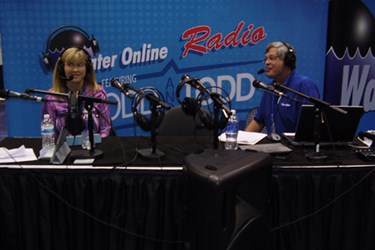San Francisco's Wastewater Priorities

Karen Kubick, Wastewater Capital Program Director with the San Francisco Public Utilities Commission, discusses San Francisco’s wastewater and stormwater needs and how the city’s asset management program is prioritizing green infrastructure, treatment plant upgrades and a new biosolids facility.
The following is an excerpt from a Q&A with Water Online Radio. Click on the Radio Player above to hear the full interview.
Water Online Radio: San Francisco is a unique geography, has a unique topography. I assume that affords some pretty interesting challenges. Talk about that a little bit.
Karen: It is extremely challenging. San Francisco is divided by a natural ridge line that runs really from south to north. We are about 49 square miles. So how we are approaching our program is to look at things from an urban watershed standpoint and we break the city down into eight different distinct urban watersheds. We study the collection system. We look at streets, we look at soil.
We determine the best way to plan out our system using both green infrastructure as well as gray infrastructure but it is incredibly challenging because there are historic creeks. There are areas that want to be wet and as we see storms changing -- higher intensity, shorter duration --we are experiencing localized flooding and challenges that we did not use to have.
Water Online Radio: You mentioned a green initiative. What kinds of things can cities be doing to take steps toward becoming greener?
Karen: What we are doing is trying to be very methodical. We are looking at building 8 major large-sized green infrastructure projects over the next three years and one of those will be in each of our eight urban watersheds.
We are going to build stormwater swales. We are going to be planting more trees, using permeable pavement etc… We are building a performance-based green infrastructure.
Currently, we have been doing a lot of monitoring of our system. We have a state-of-the-art hydraulic model. We run our model and look at our localized problems. We match up and overlay where we can best put each solution. In certain areas, we are expecting green infrastructure to be a very good performer. But we are going to build it and then we are going to test it because one thing with San Franciscans, affordability is a big issue.
We want to make sure we are not going to stretch the purse strings because infrastructure has to perform. If it is something we are building for the wastewater system, we have to know it is going to control the first inch to an inch and a half of stormwater when it comes in.
Water Online Radio: Karen, a lot of sewer systems seem to have severe capacity issues. From your experience, what are some measures that can be taken to reduce that burden?
Karen: Well, we are looking at a lot of things. As I said, we do have over 200 million gallons worth of storage and during a dry weather day in San Francisco, we are treating about 80 million gallons. During a wet weather event, we can treat up to 575 million gallons. Plus on top of that, we have our 200 million gallons worth of storage.
However, when a rainstorm comes to San Francisco, it is not raining the same everywhere in the city. So we are looking at things like real-time controls so we can move flows to different areas and we are looking at green infrastructure solutions we talked about just a minute ago.
The reason is we have done a super job of paving over the city. So when a drop of rain hits the ground, it shoots very quickly into our system. We want to slow stormwater down and reduce peaks to do a better job.
We are looking at quite a few things. Our hydraulic model also assists us because we are able to move flows potentially from one storage box to another. So we are hitting it across the board.
Water Online Radio: I was born and raised near Philadelphia. I know that is one city with a billion dollar plus budget to handle stormwater. That is a big amount of money to be investing in stormwater management, especially with tight budgets all around. How do you get that kind of money? How do you sell that with the decision makers and say we’ve got to do this?
Karen: It is a methodical approach and in San Francisco, we have a wide range of stakeholders. What we are doing is we are bringing the people to our infrastructure.
We lead green infrastructure bike rides. We take people on tours and walking tours of our system. We bring in people from outside of the neighborhood to the neighborhood where our treatment plants are. We have a very aggressive public education campaign.
We hold a lot of public meetings and workshops. We have a lot of online tools but the policymakers and decision makers also have to be informed. So we do a lot of tours with them as well and a lot of face time, one-on-one time, but it is a very compelling message. Our infrastructure is in a very poor state of repair and our program, as I said, is $6.9 billion. What we are doing is we are phasing that though.
The first 2.7 will hit the most critical problems which include upgrading our treatment plant, building a new biosolids facility as well as investing our first chunk of green infrastructure money. We are going to start with a $57 million investment. Build and make sure it performs and then move forward with phase 2 and phase 3 to build out the system…
Click on the Radio Player above to hear the full interview.
